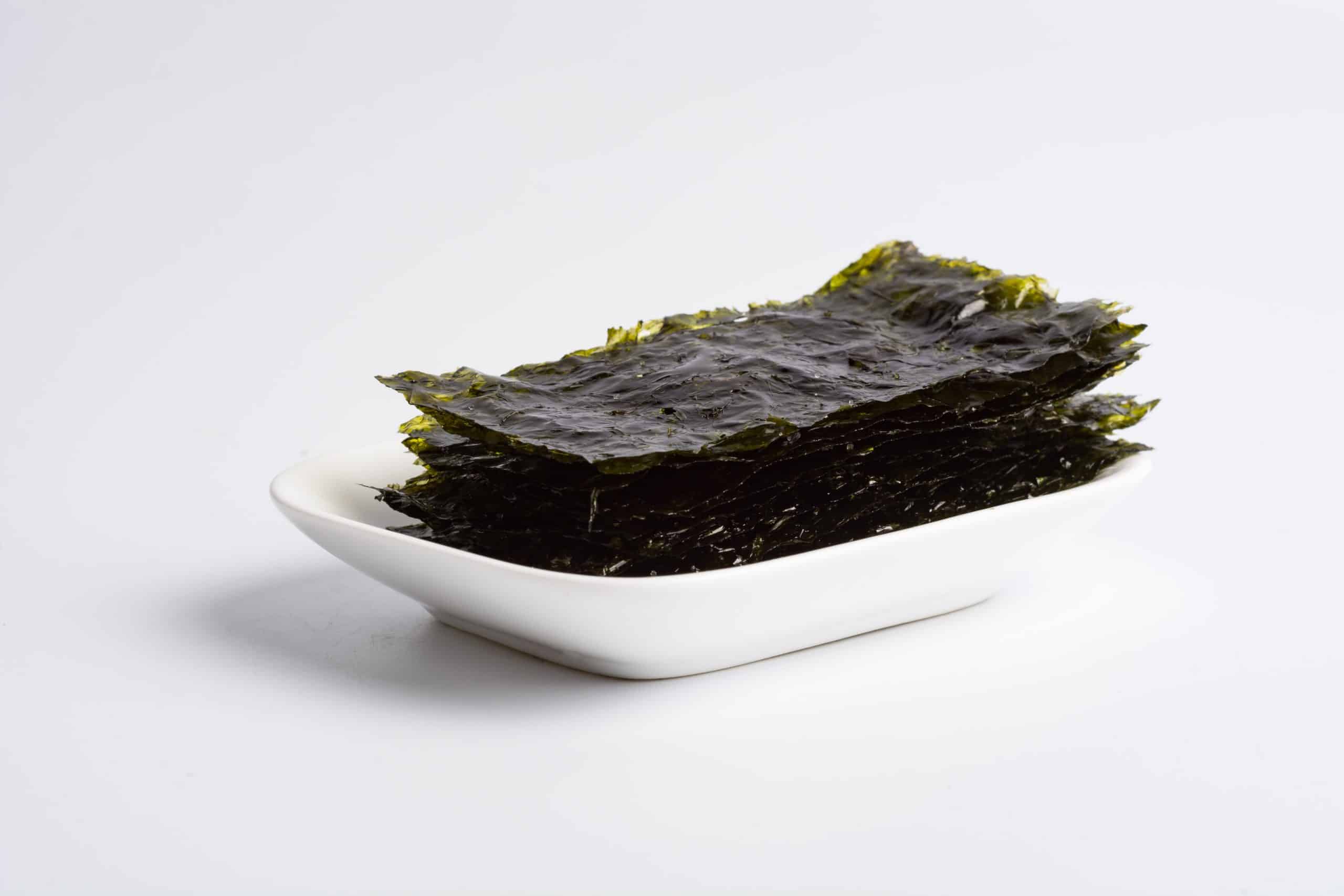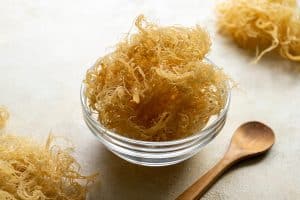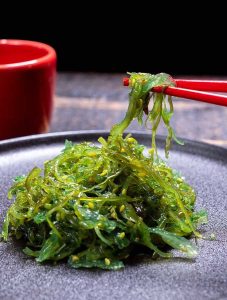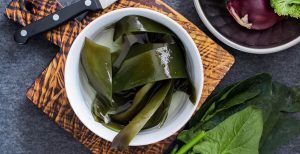Discover 10 Wonderful Varieties of Edible Seaweed to Boost Your Health

Introduction to 10 Types of Edible Seaweed both Nutritious and Delicious that can boost your health
Edible Seaweeds, I hear you say! Those extraordinary marine plants that grace the ocean’s depths have long been celebrated for their role in the marine ecosystem. But did you know that they can also enhance your health? These sea vegetables are finding their way onto every table, and if you're looking for a delicious and nutritious way to upgrade your menu, look no further. Read on to explore the ten different types of nutritional marvels of seaweed that will revolutionize your recipes and tantalize your taste buds, as well as enhance your health.
What is Seaweed?
Seaweeds, scientifically known as macroalgae, are a diverse group of algae that thrive in the salty waters of the sea. Their colors range from vibrant reds to lush greens and deep browns, even to mysterious blacks. Not only do these incredible plants serve as a food source for marine creatures like sea turtles and skipjack tuna, but also offer a cornucopia of health benefits for us humans.
Where can you find these wonderful sea vegetables?
Well, if you're near rocky shorelines, chances are you'll stumble upon these delightful plants. Countries like Japan, Korea, the Philippines, and China have long embraced seaweed as a staple in their cuisines. And with good reason.
The Benefits of Edible Seaweed
Now, you might be thinking, "Seaweed? Gross!" It's true, some edible seaweeds have a slimy texture and an ocean-like taste. But trust me, the health benefits are worth it. Edible seaweeds are packed with nutrients and essential minerals like iodine, which is crucial for maintaining a balanced digestive system and overall health.
So, without further ado, let's dive into the ten different types of edible seaweed that will take your health to new heights.
Irish Moss

Found along the Atlantic coasts of Ireland, Europe, and the United States, Irish moss, also known as sea moss, is a North Atlantic delight with a gelatinous consistency. This incredible seaweed is not only used as a food additive to maintain the quality and stability of processed goods, but it also offers a wealth of health benefits.
Rich in iodine, Irish moss aids thyroid illnesses and provides potassium for nerve and muscle function. Enjoy it fresh in a simple salad or experiment with its subtle seaweed taste in your favorite recipes.
Brown Seaweed
Say hello to Fucus vesiculosus, commonly known as bladderwrack or brown seaweed. Popular along the coast of Japan, Korea, and China, this edible seaweed contains fucoxanthin, a substance that aids in burning body fats.
Packed with essential nutrients, it can help with a variety of conditions like cancer, fibromyalgia, heart disease, and high cholesterol. The antioxidant may play a role in helping to improve blood sugar control and reducing your risk of developing type 2 diabetes. Enjoy it raw, cooked, or pickled as a flavorful side dish.
Arame Arame
A dry product that comes in dark brown strands, is a beloved seaweed in Asian cuisines. Known for its mild, slightly sweet flavor and firm texture, arame is a versatile ingredient that can be added to soups, casseroles, sauces, and seaweed salads. Explore the wonders of arame in your favorite dishes and experience the subtle taste that makes it a favorite in Japanese cuisine.
Wakame

Under the kelp family, wakame can be found along the cold, temperate coasts of the northwest Pacific Ocean.
This highly nutritious seaweed is a rich source of vitamins and minerals, with a low-calorie count to boot. It boasts various health benefits, including reducing blood pressure, lowering blood sugar levels, fighting obesity, and reducing cholesterol.
Add wakame to miso soup, salads, or stir-fries for a sweet, distinctive flavor and great texture.
Nori
Hailing from the red algae family, nori is a staple in Japanese recipes like miso soup and sushi rolls. This dried seaweed has a strong, delectable taste and is packed with vitamins and minerals essential for your health. From phosphorus to iron, nori has you covered. Chop it up, transform it into nori sheets, and let your culinary creativity soar.
Sea Lettuce
As common as its land counterpart, sea lettuce can be found on coasts all around the world. Resembling mainland lettuce, this seaweed is not only a home for small sea creatures but is also a delightful addition to your diet. Incorporate sea lettuce into soups, seaweed salads, or even delectable treats like ice cream. Experience the immune-boosting powers of this seaweed, rich in fatty acids, minerals, protein, and vitamins.
Hijiki
Originating from the Sargassaceae family, hijiki is a brown algae that grows along the coast of Japan, China, and Korea. With its high dietary fiber content, hijiki can aid in weight loss and promote a healthy digestive system. Don't miss out on the essential nutrients like iron, magnesium, and calcium that hijiki has to offer. Enjoy its sweet, clean taste and mushroom-like texture in salads, soups, and vegetarian dishes.
Sea Palm
If you're looking for a sweet-and-salty treat, sea palm is the seaweed for you. Found along the western coast of North America, this kelp species offers a crunchy texture and delectable flavor. Packed with essential nutrients like iodine, iron, calcium, and vitamins A, C, E, and B12, sea palm adds that extra oomph to vegetable, rice, and salad dishes. Don't miss the chance to explore its wonders in Japanese cuisine.
Kombu

Let's not forget about kombu, a brown seaweed that is part of the kelp family. Commonly consumed in East Asia, kombu offers a wealth of health benefits, including reducing bad cholesterol and promoting regular blood pressure.
Rich in iron, calcium, and vitamins A and C, this seaweed is a fantastic addition to your diet. Delve into the world of Japanese cuisine and discover the wonders of kombu.
Dulse
Last but not least, we have dulse, the red seaweed of the Palmariaceae family. With its savory flavor and subtle taste of the ocean, dulse is a culinary delight. Packed with vitamins, trace minerals, healthy fatty acids, antioxidants, protein, and fiber, this seaweed is a true powerhouse. Add it to soups, salads, or even enjoy it as a snack. Embrace the wonders of dulse and let it transport you to the depths of the ocean.
So there you have it, ten different types of edible seaweed that will revolutionize your health and your culinary adventures. Explore the incredible flavors, textures, and benefits of these sea vegetables. Who knows, you might just become a devoted fan of these extraordinary plants. So go ahead, dive into the ocean's bounty, and unlock a world of health and flavor.
Happy seaweed feasting!
Kindly note that some links on our website can earn us a small commission. We always aim to offer the best of what we have used ourselves or been recommended to us by our customers and colleagues. We hope you will find them helpful also.

